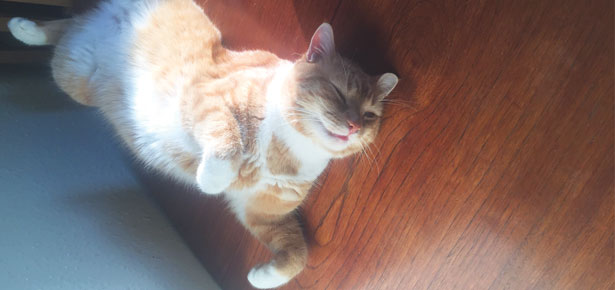

Your Guide To Switching Your Cat’s Food
When and why you should make the switch
Should You Be Changing Your Cat’s Food?
As people, we have the luxury of eating what we want, when we want. We don’t have to eat the same meal everyday if we don’t want to, and if we decide we are ready for a change, we have an entire grocery store full of new options to try. Our cats don’t have or need this luxury. Instead, there are several circumstances that warrant reconsidering your cat’s recipe choice.
Why Switch?
Some of the most common reasons to transition your pet’s food are special pet wellness needs that require additional care, your pet is reaching a new life stage, your previous recipe is no longer available, or you’ve decided you want to switch to a higher quality food.
Warning Signs
There are many signs and health changes in your cat that may signify an issue with your pet’s current food. If you notice gastrointestinal upset, itchy skin, dull or flaky coat, lethargy or weakness, or respiratory issues in your cat, these concerns should be brought to your veterinarian’s attention. To help assist your veterinarian, we recommend bringing your old bag of food you were feeding when the problem started. While this may not solve the problem, it could help narrow down the list of culprits.
Ingredient 101
When selecting a new cat food, just like when you’re selecting your own, there are favourable ingredients to look for. Generally speaking, natural preservatives such as mixed tocopherols and Rosemary extract, sources of Omega-3 and Omega-6 fatty acids such as Flaxseed and Salmon Oil, as well as antioxidant sources such as Blueberries, Blackberries, Pomegranate or Raspberries, are all considered worthy of the ‘approved’ list.
What to Expect
The time it takes for your cat to transition will depend on their preference. Some cats are quite finicky in terms of what they eat, while others will eat whatever you present them with. Try to plan a feeding schedule to help you track the amount of food your cat is consuming daily. To begin the transition to a new recipe, add a small portion of the new food with the old food, while gradually increasing the new food and decreasing the old food over a period of 10 days. Eventually your pet will be eating only the new food, and the transition will be complete.
Pet foods often provide a set of Feeding Guidelines which help you determine the amount to feed your cat daily. Use these as a baseline and adjust according to breed, age, gender, activity level and desired body condition, as each pet is unique. Though transitioning your cat’s food can be touch-and-go to start off with, the time invested will pay off in a happy and healthy life for them.
This content is brought you by Nutram
Nutram is the creator of dog and cat foods produced with Optimum Combinations™ of holistic and natural ingredients that come together to better your pets’ health. Find out more about transitioning your pet’s food at nutram.com/otc.
Join the newsletter and never miss out on cat content again!
"*" indicates required fields
By clicking the arrow, you agree to our web Terms of Use and Privacy & Cookie Policy. Easy unsubscribe links are provided in every email.




